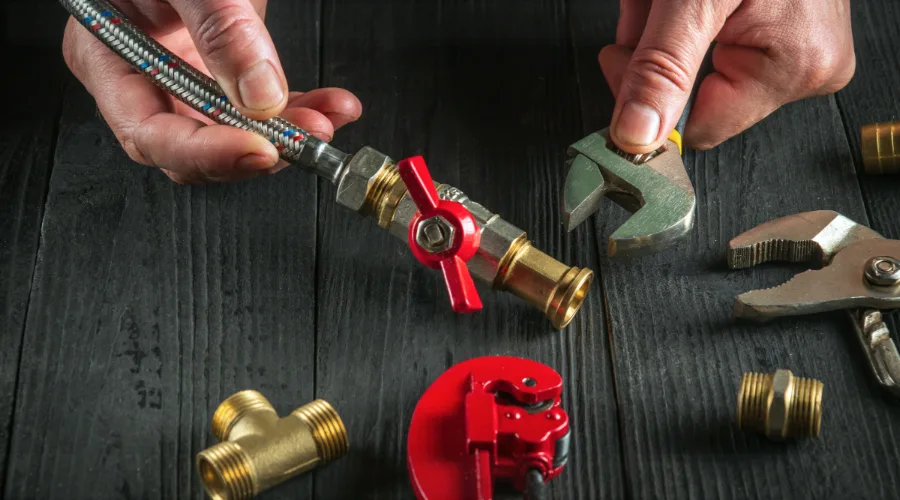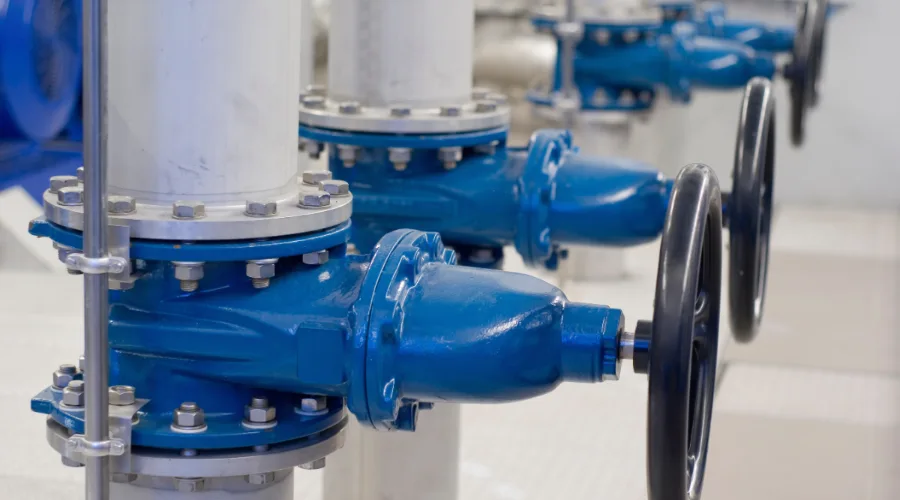Water valves are a necessity in construction because they provide effective control over the water flow in industrial and plumbing works. These vital components control, divert or block the flow of water in such a way that pipes do not burst and water flows smoothly. With such a diverse array of valves, it becomes extremely difficult to narrow it down to one for a construction project. Factors such as pressure, material, and purpose of the valve must be thoroughly analyzed for an informed choice.
At Brick & Bolt, we value construction products such as water valves because they are reputable for their quality and effectiveness. This article will assist you in choosing the right building materials for your building projects by discussing the types and applications of water valves as well as installation methods.
What is a Water Valve?
A water valve is a fundamental device used to control the flow of water within a plumbing system. It may or may not work (with flow volume) depending on the given condition. Water valves are used in pipelines, taps, irrigation systems and certain industrial processes. Water valve designs are as numerous as their applications. Using the proper valve type guarantees optimal efficiency while reducing the chances of plumbing difficulties.
Types of Water Valves Used in Construction
Various construction works require specialized water valves for effective distribution and regulation of water. The following are the most commonly used water valves in construction.
Ball valves
It controls the flow of water through a rotating ball containing a bore. They are ideal for shut-off operations, possess a strong seal, and are extremely resistant. These valves, with simple quarter-turn operation, are widely utilized in industrial and plumbing settings.
Butterfly valves
These valves control water flow through the use of a rotating disc. They are light, compact, and ideal for applications that require instant shutdown. In big pipe networks, where space is crucial, the choice of pipe type plays a key role in deploying these valves effectively
Check valves
Backflow can be prevented by allowing the water to flow in one direction. This type of valve in plumbing systems ensure the retention of water pressure and the exclusion of impurities. Irrigation systems and sump pumps frequently contain them.
Faucet Valves

Water circulation in residential and commercial faucets is controlled by using these valves. They help prevent leaks and ensure smooth flow. These valves, which provide consumers with accurate water control, are most important for bathroom and kitchen faucets’ building requirements.
Gate Valves

Gate valves are not used to control flow, but rather on and off. To start or end water flow, they employ a device that resembles a gate and moves in a vertical plane. Systems with the least flow restriction are best suited to these valves.
Globe Valves
Globe valves employ a stationary ring seat and a roaming disk to inhibit the flow of water. Globe valves are perfect for throttling applications, such as industrial pipes and water treatment plants, thanks to their high level of accuracy in controlling water.
Pressure Relief Valves
Water accumulation in the water system through overpressure is prevented by pressure relief valves. They automatically release water to protect pipes and appliances when pressure becomes dangerous. These valves are known for their safety purpose in high-pressure water systems.
Supply Stop Valves
These valves are placed beneath sinks and toilets to regulate the water supply to certain fixtures. They provide ease in residential plumbing by allowing maintenance operations without shutting off the water source fully.
Mixing Valves
To provide a consistent temperature, mixing valves mix hot and cold water. They are commonly applied in sinks, showers, and in the industrial sector to ensure water use that is comfortable and safe.
Choosing the Right Water Valve
The best water valve depends on the application and water flow requirements. While some valves regulate the water flow, others totally stop it. Ball valves function well in systems with high pressure. Gate valves are helpful when full flow is required. Globe valves are an excellent option if you need to regulate the water flow rate.
By preventing backflow, check valves guarantee that water only flows in one direction. In residential homes, faucet valves regulate taps, while mixing valves modify the water’s temperature. Verify the material, size, and pressure demand before making a purchase. A carefully selected valve saves water, stops leaks, and keeps plumbing systems operating smoothly.
Applications of Water Valves in Construction
Water valves are very important elements of building construction. They guarantee smooth functioning by helping regulate the flow of water through pipes. Several applications of water valves in construction are as follows:
- Water supply to bathrooms, kitchens, and gardens is regulated through valves in homes.
- They work efficiently in enormous water systems in commercial environments.
- Valves in industrial plants regulate chemicals and high-pressure water.
- Valves are applied in fire safety systems to manage the emergency water supply. Valves also assist with irrigation, where farmers can manage crop water consumption. They regulate and manage water flow in wastewater treatment plants.
- Plumbing systems could fail with the wrong water valves, resulting in damage and leakage.
Installation Process of Water Valves
The step-by-step installation process of water valves are as follows:
1. Preparing and taking precautions
Prior to commencing, turn off the primary water supply in order to prevent floods or leakage. For compatibility, choose the right valve based on its size, material, and application. Collect the tools needed, including a wrench, pipe cutter, and thread seal tape. Ensuring safety and being equipped helps the installation process proceed more efficiently.
2. Sealing and Cleaning
Scrub the ends of the pipe, clean to remove debris, rust, and previous sealant to provide a secure fit. Thread seal tape or plumber putty may be applied at threaded connections to prevent leaks. A firm, waterproof seal is spread evenly over the thread. Effective sealing minimizes the risk of future plumbing issues and water leaks.
3. Testing and Connecting
Make sure the valve is correctly seated and aligned with the pipes before tightening. Hold the pipes firmly enough with a wrench to avoid damaging the fittings. Turn on the water supply and slightly open the valve to test for leaks. If leaks are discovered, reapply the sealant or modify the connections before testing for ease of movement once more.
Conclusion
In conclusion, water valves play a crucial role in maintaining flow and reliability. From home to industrial applications, the right valve selection enhances durability and performance. Brick & Bolt focuses on proper valve selection and installation to facilitate sustainable and efficient water management in construction. Familiarity with various types of valves and applications allows informed decision-making and ensures long-term reliability in any construction project.

